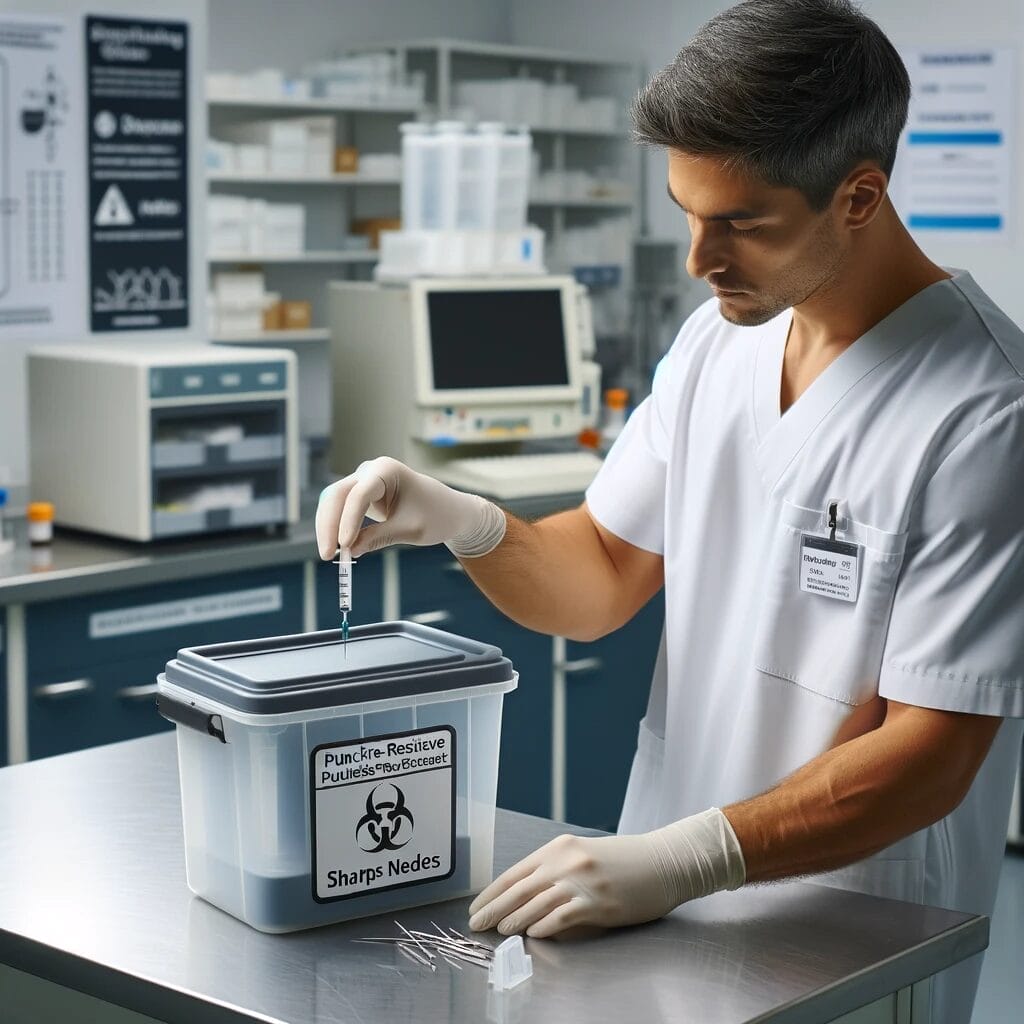In this comprehensive guide, we’ll delve into the crucial topic of Sharps Handling Guidelines, a subject of paramount importance in healthcare and various other sectors where sharp instruments are commonly used.
Understanding Sharps and Their Importance in Sharps Handling Guidelines
Sharps, in a professional context, refer to any medical or laboratory instruments that can puncture or cut the skin, such as needles, scalpels, and broken glass. The handling of these items, as outlined in Sharps Handling Guidelines, is not just a matter of procedure; it’s a significant aspect of workplace safety and patient care.
The Risks Associated with Sharps in Sharps Handling Guidelines
The primary concern in Sharps Handling Guidelines is the risk of injury and infection. Improper handling can lead to cuts or punctures that not only harm the individual but also pose a risk of transmitting infections, notably blood-borne pathogens like Hepatitis B, Hepatitis C, and HIV.
Key Guidelines for Handling Sharps
Use with Awareness in Sharps Handling: Always handle sharps with full attention. Distractions can lead to accidents as outlined in Sharps Handling Guidelines.
Proper Disposal According to Sharps Handling Guidelines: Sharps should be immediately disposed of in clearly marked, puncture-resistant sharps containers. These containers should be easily accessible and located close to the area of use as per Sharps Handling Guidelines.
Personal Protective Equipment (PPE) in Sharps Handling: Use appropriate PPE like gloves and, in some cases, eye protection. This reduces the risk of injury and contamination.
No Recapping of Needles as per Sharps Handling Guidelines: To prevent needle-stick injuries, avoid recapping needles. If recapping is necessary, use a one-handed technique or a device designed for this purpose.
Reporting Incidents in Sharps Handling: In case of a sharps injury, report immediately and follow the protocol for such incidents. This often includes medical evaluation and treatment.
Training and Education in Sharps Handling: Regular training should be provided to all staff handling sharps. This training should cover the correct handling techniques and procedures for injury response as per Sharps Handling Guidelines.
Engineering Controls in Sharps Handling: Where possible, use devices with safety features like self-sheathing needles. These reduce the risk of accidental injury.
Safe Passing Techniques in Sharps Handling: When handing over a sharp instrument to another person, do so in a manner that minimises the risk of injury. For instance, place the item down for the other person to pick up, rather than passing it directly.
Maintenance of Equipment in Sharps Handling: Regular checks and maintenance of equipment like sharps containers are crucial. Overfilled containers can be hazardous.
Minimise Handling as outlined in Sharps Handling Guidelines: Reduce the need for handling sharps where possible. For example, using pre-filled syringes can decrease the handling of needles.
Advanced Considerations in Sharps Handling Guidelines
Beyond the basic guidelines, there are advanced considerations to bear in mind in Sharps Handling Guidelines:
Technological Advancements: Stay updated with the latest safety devices and technologies in sharps handling.
Ergonomics in Sharps Handling: Consider the design of the workspace and how it impacts the safe handling of sharps. Ergonomic tools can reduce the risk of injury.
Psychological Impact of Sharps Handling: Handling sharps can be stressful, particularly after an injury. Support for mental health and stress management is vital.
Legal Compliance in Sharps Handling: Ensure adherence to local laws and regulations concerning sharps handling. This includes disposal regulations and workplace safety standards.
Conclusion on Sharps Handling Guidelines
In conclusion, the handling of sharps as per the Sharps Handling Guidelines is a multifaceted issue requiring a combination of proper technique, awareness, and adherence to safety protocols. By implementing these guidelines, the risks associated with sharps can be significantly mitigated, ensuring a safer working environment and better patient care. Remember, every sharp handled correctly is a potential injury prevented, and adhering to the Sharps Handling Guidelines is essential for safety.
If you would like to know more or would like our assistance in the areas mentioned check us out at www.intrinsicsafety.com.au. Alternately, call us on 1300 990 336 or email us at [email protected]



